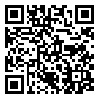Volume 14, Issue 1 (5-2023)
Res Anim Prod 2023, 14(1): 139-144 |
Back to browse issues page
Download citation:
BibTeX | RIS | EndNote | Medlars | ProCite | Reference Manager | RefWorks
Send citation to:



BibTeX | RIS | EndNote | Medlars | ProCite | Reference Manager | RefWorks
Send citation to:
latifi M, Naderi Y. (2023). The Effect of Pedigree Error on Heritability and Accuracy of Prediction of Breeding Value in Threshold Traits. Res Anim Prod. 14(1), 139-144. doi:10.61186/rap.14.39.139
URL: http://rap.sanru.ac.ir/article-1-1315-en.html
URL: http://rap.sanru.ac.ir/article-1-1315-en.html
1- Independent Researcher, PhD in genetics and Animal Breeding from university of Kurdistan, Kurdistan, Iran
2- Department of Animal Science, Astara Branch, Islamic Azad University, Astara, Iran
2- Department of Animal Science, Astara Branch, Islamic Azad University, Astara, Iran
Abstract: (2708 Views)
Extended Abstract
Introduction and Objective: Complete information of relationship matrix is an important principle to achieve reliable results in genetic evaluations. Two kinds of pedigree errors, including incorrect pedigree information and missing pedigree information, reduce the capability of the livestock model in traditional methods. The purpose of this study was to investigate the different levels of missing pedigree information such as sire, dam and both parents (sire and dam together) on heritability, accuracy of prediction and estimation of breeding value in threshold traits.
Material and methods: Sex-limited traits with heritability of 0.05, 0.1, and 0.2, were simulated. In order to create threshold phenotypes of litter size, 20% of the top-phenotypes were considered as two and the rest were considered as one. Different ratios of missing sire information (zero, 5, 10, 15 and 20), missing dam information (zeros, 5 and 10) and a combination of both missing information (sire and dam together) were created. A threshold model was considered. Heritability, breeding values and accuracy of prediction were calculated by Bayesian statistical method.
Results: With the introduction of different levels of missing pedigree information to the complete pedigree, the amount of heritability decreased. The lowest values of heritability were 0.018, 0.084 and 0.16 for heritability of 0.05, 0.1 and 0.2, respectively. In the complete pedigree, the lowest and highest accuracy of prediction were 0.375 (h h
Conclusion: The results showed that, compared to the paternal or maternal missing pedigree information separately, paternal and maternal missing pedigree information together, further reduces the estimation of genetic evaluations.
Introduction and Objective: Complete information of relationship matrix is an important principle to achieve reliable results in genetic evaluations. Two kinds of pedigree errors, including incorrect pedigree information and missing pedigree information, reduce the capability of the livestock model in traditional methods. The purpose of this study was to investigate the different levels of missing pedigree information such as sire, dam and both parents (sire and dam together) on heritability, accuracy of prediction and estimation of breeding value in threshold traits.
Material and methods: Sex-limited traits with heritability of 0.05, 0.1, and 0.2, were simulated. In order to create threshold phenotypes of litter size, 20% of the top-phenotypes were considered as two and the rest were considered as one. Different ratios of missing sire information (zero, 5, 10, 15 and 20), missing dam information (zeros, 5 and 10) and a combination of both missing information (sire and dam together) were created. A threshold model was considered. Heritability, breeding values and accuracy of prediction were calculated by Bayesian statistical method.
Results: With the introduction of different levels of missing pedigree information to the complete pedigree, the amount of heritability decreased. The lowest values of heritability were 0.018, 0.084 and 0.16 for heritability of 0.05, 0.1 and 0.2, respectively. In the complete pedigree, the lowest and highest accuracy of prediction were 0.375 (
Conclusion: The results showed that, compared to the paternal or maternal missing pedigree information separately, paternal and maternal missing pedigree information together, further reduces the estimation of genetic evaluations.
Type of Study: Research |
Subject:
ژنتیک و اصلاح نژاد دام
Received: 2022/07/28 | Accepted: 2023/01/7
Received: 2022/07/28 | Accepted: 2023/01/7
Send email to the article author
| Rights and permissions | |
 |
This work is licensed under a Creative Commons Attribution-NonCommercial 4.0 International License. |




